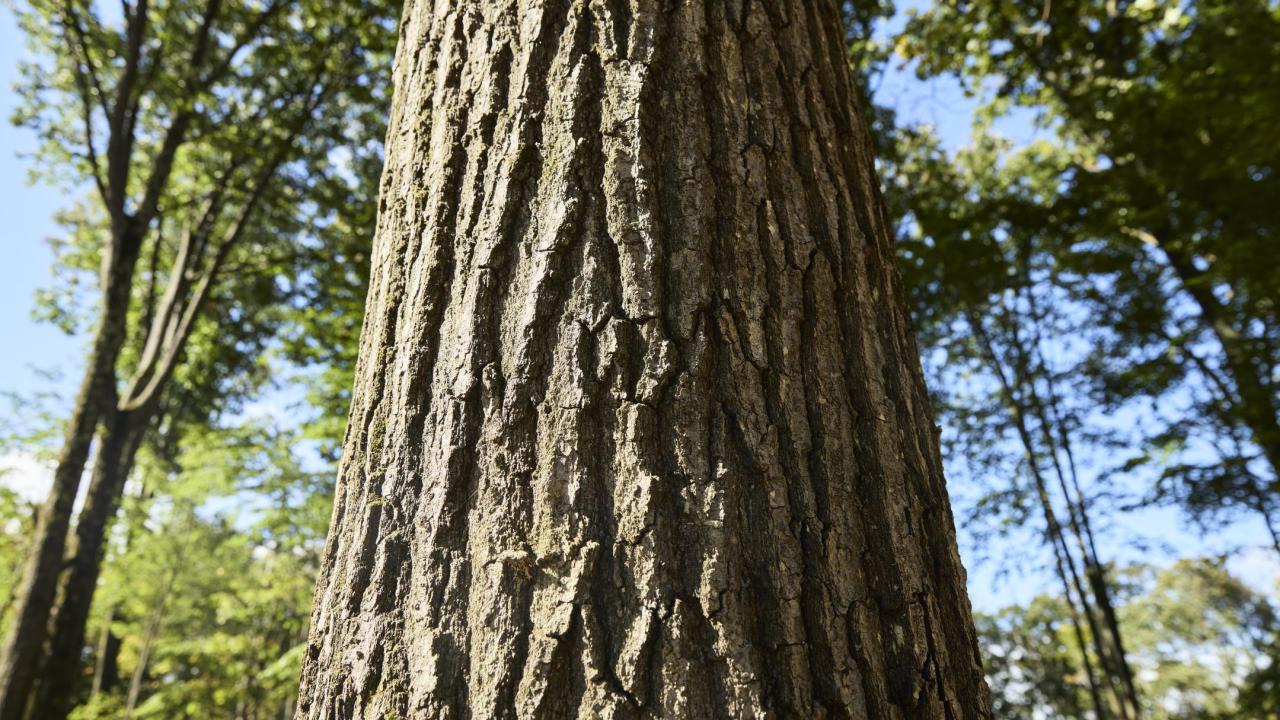Sourcing American hardwood
Wood is a natural material derived from a dynamic resource and as a result the American hardwoods presented on this website vary greatly in look, character and performance from species to species. Single species can also vary from one region to another, depending on climate, soil and altitude as well as forest management. This exciting palette can provide great opportunity for design, but it is essential to choose the right species for a particular use. These guidelines, while not exhaustive, are our recommended starting points for conversations to source American hardwoods, ensuring you select species that are ‘fit for purpose’.
PROPERTIES
There are many sources of information on the characteristics and working properties of American hardwood species and these are well worth checking to avoid mistakes in processing. For example, oak is very strong and hickory is very hard for flooring, while some others are not. Some species will be more susceptible to movement under varying moisture conditions than others.
COLOUR CHANGE
The looks, or aesthetic, are one of American hardwoods’ most attractive features, so consider colour, grain and finishing before selecting. For example, cherry polishes to a very fine finish, which is hard to achieve in cottonwood. Natural colour variations exist within most U.S. hardwood species, such as differences in heartwood and sapwood, or mineral streaks. Also be aware that some species will change colour over time on exposure to light. Generally, lighter coloured timbers such as cherry and tulipwood will darken and darker timbers such as walnut will lighten.
REGIONAL DIFFERENCES
One single species can vary according to where it is grown, influenced by climate, length of growing season, temperature according to altitude and more. American exporters can help explain these differences. For example, ash or oak from the north will likely be quite different to southern ash. These differences can be minimised by sourcing from just one geographical area.
VARIANCES
As well as regional differences, species can often display variances within a single source, according to the amount of sapwood and heartwood. The difference between the two is minimal in some species (like oak), but in others (like willow) it is much more pronounced. American tulipwood (aka yellow poplar in the USA) can have huge variances within a single parcel of logs that may be determined just by their diameter.
SUB - SPECIES
This is a case of ‘same but different’. Some American hardwood species have numerous sub-species. For example, there are about eight red oaks commercially available and while they are generally the same and all sold as red oak, there can be subtle differences. For example, some red oaks grow faster and these may have more open grain, also affected by provenance.
SPECIFICATION LIMITS
It is important to know the practical limitations of length, width, thickness, drying shrinkage and availability of quality in a given species. We believe this starts in the forest where there is considerable difference in the size of trees grown; tulipwood is one of the tallest, whereas walnut is generally much smaller and shorter affecting the lumber specifications that are available. Once trees have been harvested, sawmills do not cut logs longer than 16ft (4.8m) and in many species, widths over 12 inches (300mm) are limited. Remember FAS grade walnut does not come clear in 25 foot lengths! Specify air dried (AD) or kiln dried (KD) to defined moisture content (MC). The bulk of hardwood lumber production is focused on thinner sizes such as 25mm and 32mm (produced in feet and inches and expressed as 4/4inch and 5/4inch) and although thicker sizes are available in some species, volume may be limited.
GRADES
If you are sourcing American hardwood lumber, either directly from the USA or from distributors, it is absolutely essential to understand the NHLA (National Hardwood Lumber Association) grading principles, which indicate yield for specific purposes, to avoid overpaying or underspecifying. For example, furniture manufacturers can achieve excellent yield from No.1 Common ‘furniture’ grade or even lower, whereas joinery and door manufacturers may need the longer lengths of clearer wood only achieved in FAS grade. Your cost is determined by yield, not just price. Grades can be modified by suppliers.
In contrast to sawn lumber, veneer producers tend to set their own grades according to customer requirement, grouped as panel, furniture and backing.
FIND A FRIEND
Finally, the best advice is to work with, and listen to, your supplier, whether they are a direct U.S. exporter or an in-country distributor, to understand your needs. These companies distribute the raw material, or produce components or finished products that can be specified by architects and designers or consumed by end users. Regional trade associations, federations and technical wood organisations can provide local market access to companies trading and manufacturing in American hardwoods. This site lists some of the most relevant European organisations below.
